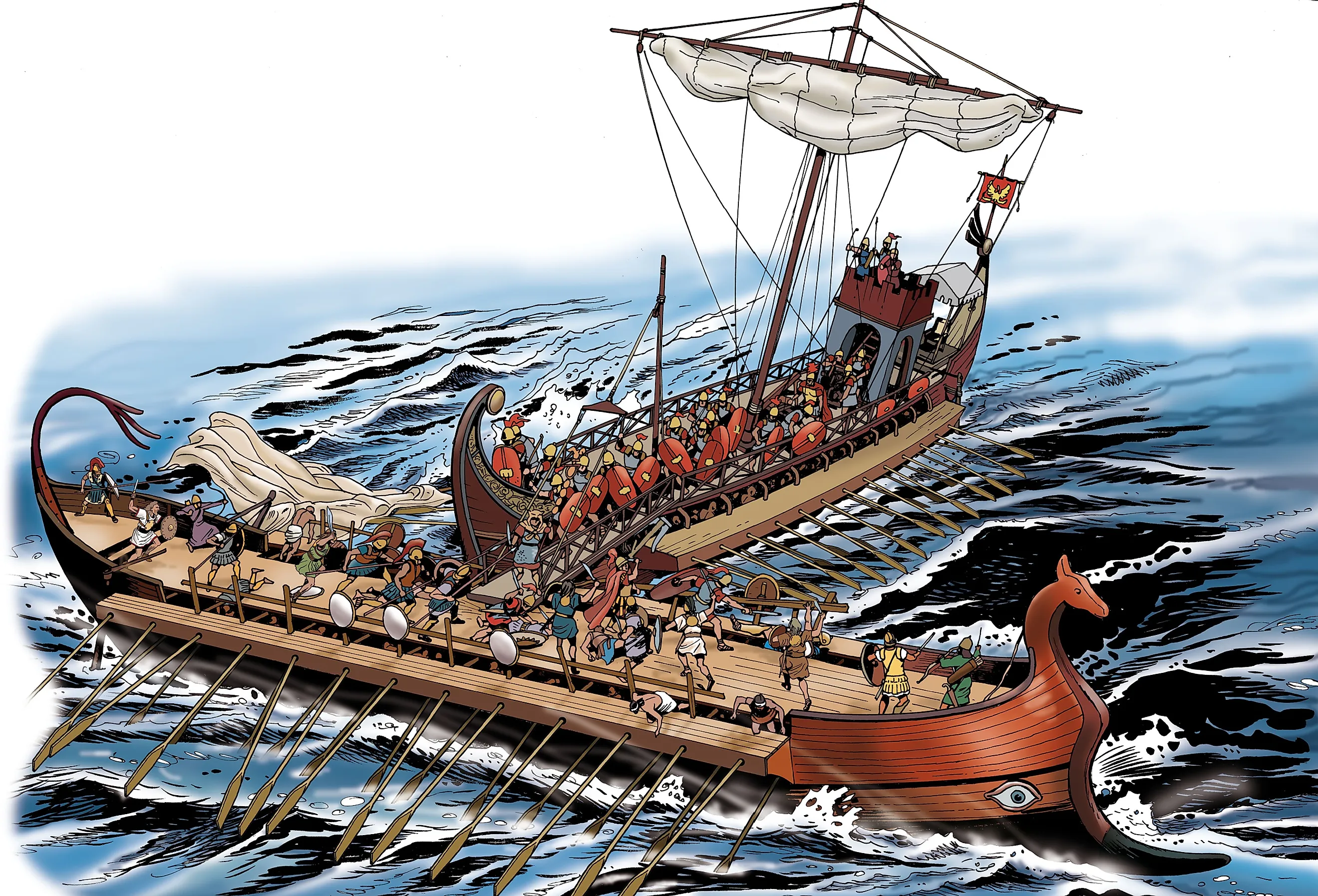
The Dawn of the Roman Navy
The Roman Empire and its conquests can be directly attributed to its stellar army. Its legions were the best fighting force of the Ancient World and would be the envy of many lesser nations long after the collapse of Rome in 476 AD.
While its land forces had always been remarkable, even back in the early days of the Roman Kingdom and Republic, its navy began as nothing more than an embarrassing fleet of rafts and trade ships. Despite such humble beginnings, by the reign of the first emperor Augustus in 31 BC the Roman navy would have total and undisputed control over the entire Mediterranean Sea.
Carthage Must Be Destroyed
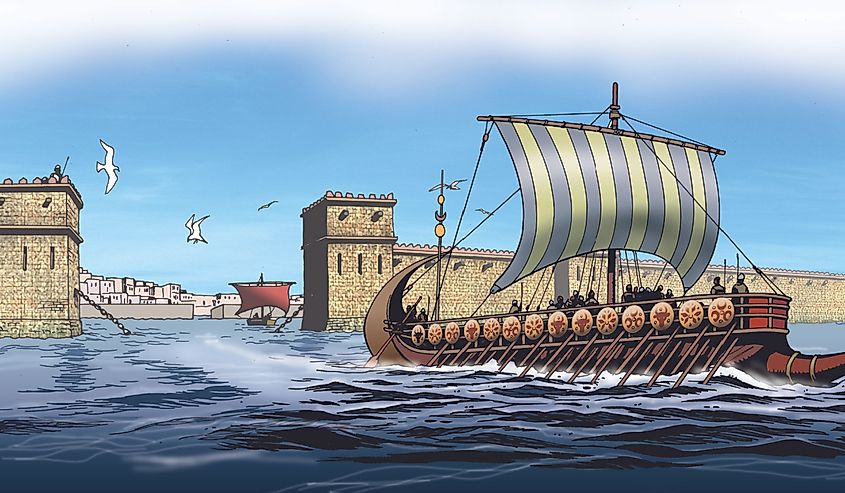
Like many great leaps forward in technology and capability, the origins of Rome's control over the Mediterranean were forged out of necessity to match one of its greatest rivals. The Carthaginian Empire, a direct rival to the Roman Republic, was the master of the sea. Based on what today is Tunis, Lybia, and Algeria, the Carthaginians built their empire on trade and commerce.
To maintain its extensive and lucrative trade routes Carthage maintained a large and capable navy that ensured the security of its merchants from pirates and other hostile nations. While Rome depended on its land army to expand and conquer, the Carthaginians relied on its navy to project its power and influence across the Mediterranean World.
Rome would come into direct conflict with Carthage three separate times, narrowly winning the first two wars. Even though Rome would come out on top each time, the Carthaginians would push the young nation to its breaking point on more than one occasion.
The Punic Wars
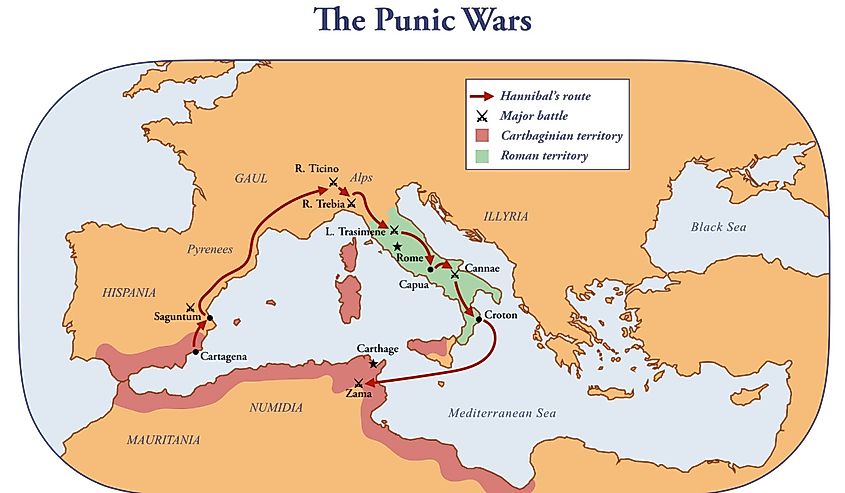
The First Punic War began in 264 BC between Rome and Carthage over who would control Sicily and Sardinia. The Romans had a clear advantage on land but were almost powerless to stop Carthage at sea.
Roman supplies and reinforcements from Italy would be routinely harassed or destroyed by the Carthaginian navy. This made life difficult for Rome's army which was essentially trapped in Sicily. However, as things began to look bleak the Romans stumbled upon a shipwrecked Carthaginian ship (called a quinquereme) just off the Sicilian coast. The Romans were able to take it and use the design to make their navy.
According to the Roman historian Polybius, the Romans were able to build a staggering 120 ships within 60 days. For the first time in its brief history, Rome had a respectable navy. But despite the unquestionable enthusiasm and tenacity of the Romans, they still lacked any kind of experienced sailors and would be going into battle against a much larger and more seasoned enemy.
Turning the Tides
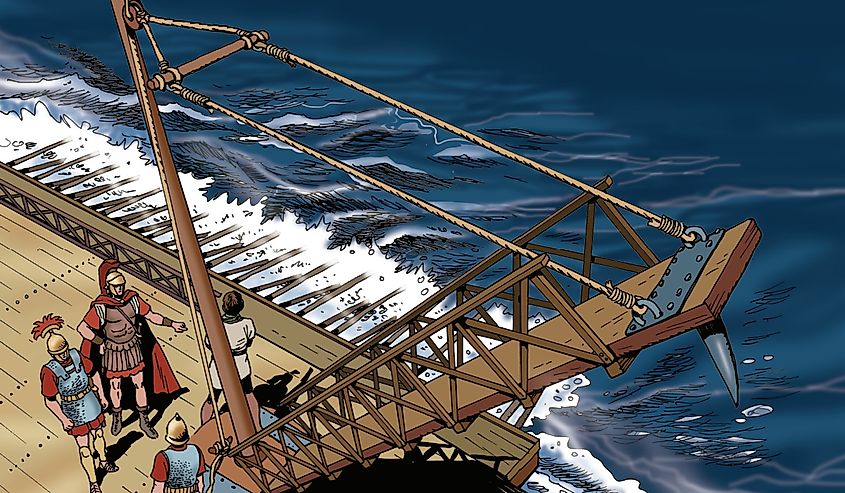
The Romans were not oblivious to their shortcomings at sea. They knew full well that they would be at an enormous disadvantage if they fought the Carthaginians ship for ship. To help sway the balance of power the Romans intended to incorporate their biggest strength into naval combat.
Roman engineers invented something called the Corvus. This was a large plank that could be raised and lowered from a Roman ship. The idea was that the Roman ships would be loaded with soldiers and sail up next to a Carthaginian vessel. Once they were close enough, the Corvus would drop on top of the enemy ship allowing for Roman soldiers to poor across and make short work of the Carthaginian sailors onboard.
The covers were initially an incredible success. At the Battle of Mylae and the Battle of Cape Ecnomus, the Romans were able to catch the much larger Carthaginian navies off guard by turning a naval battle into a land battle. Not only did this turn naval engagements in the Romans' favor but this tactic often resulted in many more captured enemy ships only growing Roman naval supremacy further.
This new invention would eventually backfire, however. Only a year after their stunning victory at Ecnomus, the entire Roman navy was almost destroyed in a storm. The inexperienced Roman admirals routinely sailed through storms and ignored bad weather. It is also thought that the Corvus made the Roman ships top-heavy and much more susceptible to sinking. Rome lost more than 90% of its navy in this incident.
Despite the Roman victory in the First Punic War, Roman casualties were astoundingly high. According to Roman records, as many as 400,000 Romans died in the conflict. Many of which are thought to have been losses taken at sea.
Trouble in East
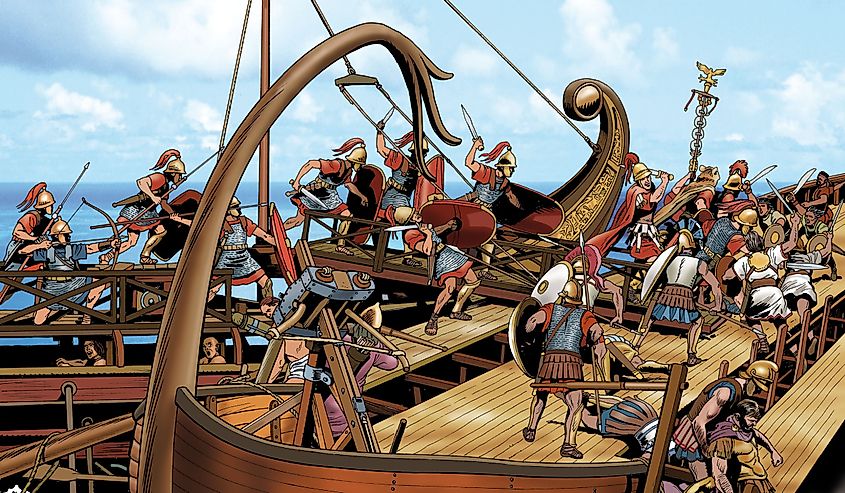
After the First Punic War, Rome was the unquestioned ruler of the Western Mediterranean. The only powers that remained who could challenge them were the Seleucid Empire and Ptolemaic Egypt. Both of which would suffer defeats at the hands of the Roman navy.
Both nations were in sharp decline and once war was declared against Rome, the conflicts did not pose much of a challenge for the Roman military on land or sea. After Egypt and the Levant were conquered, the only real naval threat that remained within the Roman territory were instances of privacy that would flair up now and again.
In 34 BC the last major pirate fleet was destroyed by Octavian's navy. Ironically the pirate fleet was led by Sextus Pompey, the son of Pomey the Great. Pomey the Great was responsible for leading his crusade against piracy essentially eradicating it from Roman lands.
Summary
The endless struggle and suffering of the early days of the Roman navy are a great example of how Rome was able to overcome and eventually conquer its many enemies. While the Roman military was often head and shoulders above the rest, there were far from invincible.
The Romans suffered plenty of military defeats on both land and sea but it was their unrivaled drive and tenacity that kept them from being conquered instead of the conquerors that we know them as. Rome could adapt and change depending on the circumstances that they found themselves in there were able to forge such a storied and impressive legacy that is known around the world today.











